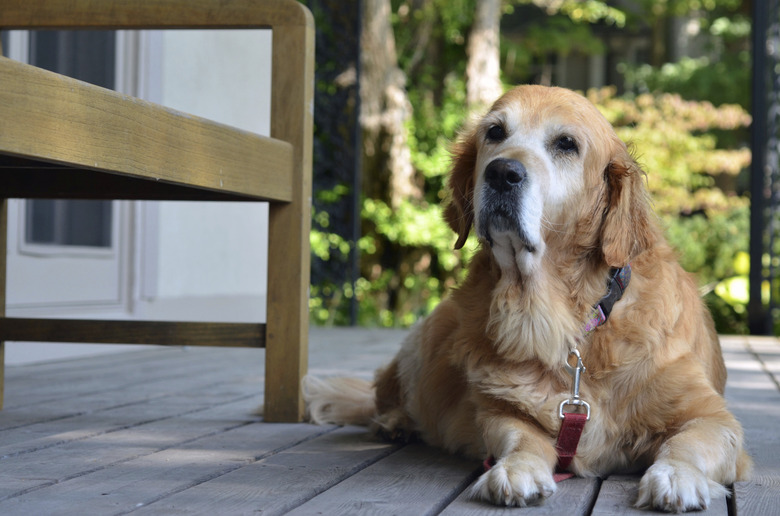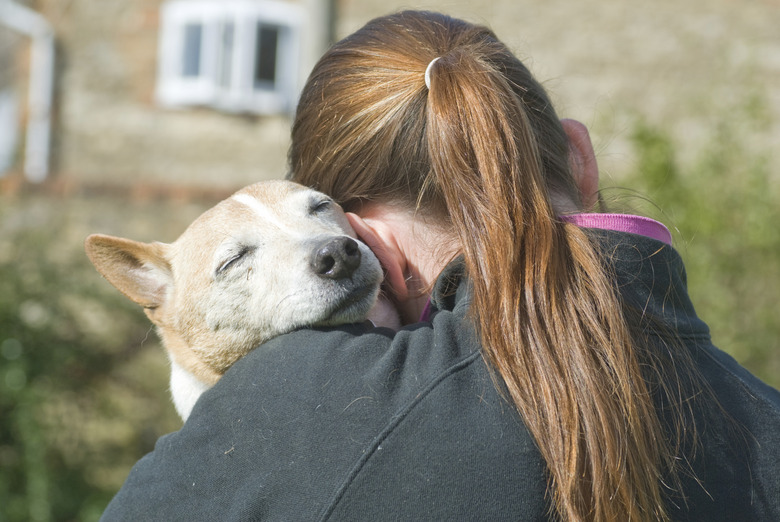How To Support An Older Dog's Weakening Legs
If your old dog has splayed legs or difficulty getting up, he may need some support for his weakening legs. It is normal for strength to decline with age, and older dogs are also more likely to have conditions that may cause joint pain or muscle loss, such as arthritis, hip dysplasia, or degenerative myelopathy. Getting your older dog the support he needs ensures that he can still get some much-needed exercise and continue to enjoy his senior years.
Medical treatment for dog legs giving out in old age
Medical treatment for dog legs giving out in old age
If your dog's legs are giving out in old age, he may have a medical condition that can be treated. Once you have a diagnosis from your vet, you can discuss treatment options and decide if they are right for your pet. Osteoarthritis is common in older dogs. Treatment options often include medication, physiotherapy, and cold laser therapy.
Hip dysplasia is a condition that affects dogs of all ages. It occurs when the hip joint is loose, which can be painful for your dog. There are many surgical options available if your dog is healthy enough, but older dogs are at greater risk when put under anesthesia. Medications, weight management, and physical therapy are other treatment options.
Unfortunately, there are some conditions with no treatment options available other than supportive care. One example is degenerative myelopathy which begins with hind end weakness and loss of coordination. In later stages, front legs also weaken, hind legs may become paralyzed, and your dog may experience other symptoms, like loss of bladder control and difficulty swallowing.
Medications and supplements
Medications and supplements
Your vet may recommend supplements or prescription medications to help support your older dog's joints and weakening muscles. Your vet may prescribe nonsteroidal anti-inflammatory medications, or NSAIDs, to help decrease pain and inflammation in your senior dog. Over time, these medications can damage your dog's liver and kidneys, so you and your vet will have to weigh the benefits of pain relief with the potential side effects in your senior dog.
Your vet may also recommend supplements to protect cartilage, such as glucosamine and condroitin. It can help with conditions such as arthritis, hip dysplasia, and spinal disc injuries. Unfortunately, there is limited veterinary research to prove the effectiveness of the supplements, but many dog owners find them useful.
Physical support options
Physical support options
If your old dog has splayed legs or other signs of weakness, there are plenty of ways to physically support him. Adjust the environment to make it easy for him to get around. This may include laying down rugs on hard floors and a ramp to help him get in and out of the car without jumping. Some other adjustments may include new bedding that takes the pressure off your dog's joints while he is resting and a raised feeder so that he doesn't have to bend down to eat or drink.
You can also purchase a harness with a handle so that you can help carry your dog's weight as he walks. You can also get a dog wheelchair to support your pup's hind legs if he has severe weakness or paralysis.
Exercise and weight loss
Exercise and weight loss
Whether your dog is losing muscle mass from old age or another medical condition, maintaining a healthy weight is critical to extending your pup's life and improving the quality of her life. Speak with your vet about adjusting her diet so she is getting the right amount of food. Limit treats or decrease food on days you offer a lot of treats.
Exercise can be challenging for dogs with mobility issues, but it is important to prevent additional muscle loss. Physical support devices can help your dog get out on daily walks. Keep it slow and steady and don't push your dog to go farther or faster than she is able. Choose easier routes that avoid steep hills and uneven surfaces.
If there are adverse weather conditions, consider playing games indoors or teaching her some new tricks to keep her engaged. Swimming can be a great alternative to daily walks. It is a good exercise with much less pressure on your dog's joints. Make sure to choose a body of water or pool that your dog can get out of easily and that doesn't have a strong current.
References
- American College of Veterinary Surgeons: Canine Hip Dysplasia
- University of Missouri Veterinary Health Center: Degenerative Myelopathy
- American Kennel Club: Can Glucosamine for Dogs Help Treat Arthritis and Joint Pain?
- PDSA: Exercising Your Senior Dog
- American Kennel Club: Osteoarthritis in Dogs — Signs and Treatment
- Preventive Vet: How to Help An Older Dog with Arthritis and Other Mobility Problems


